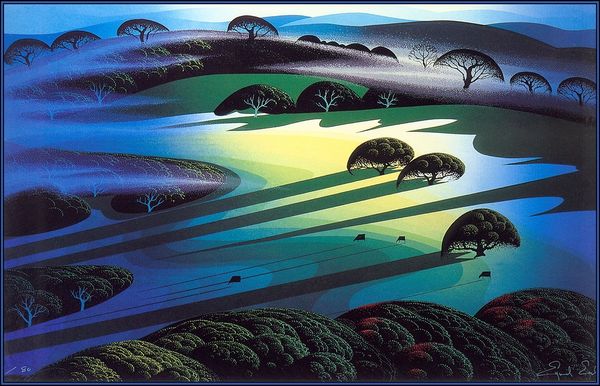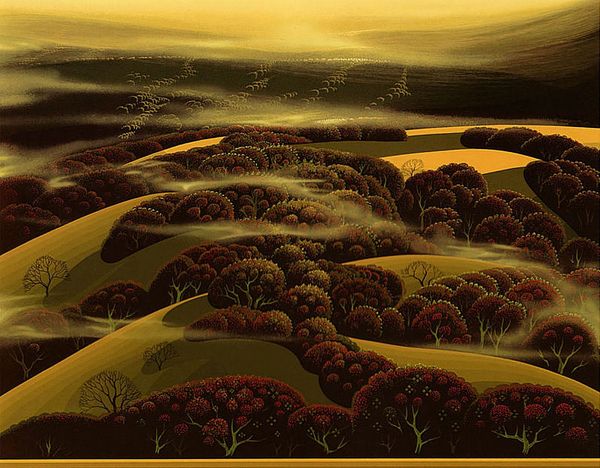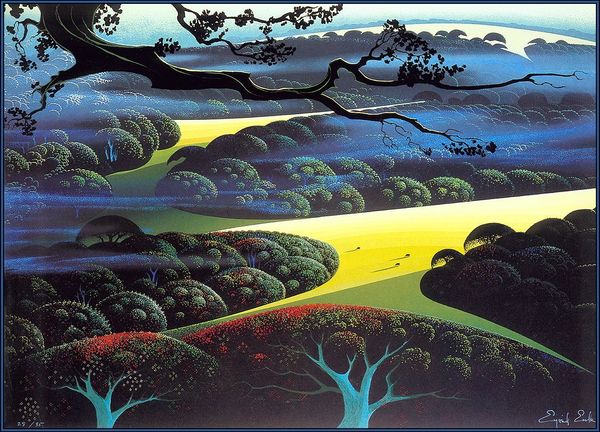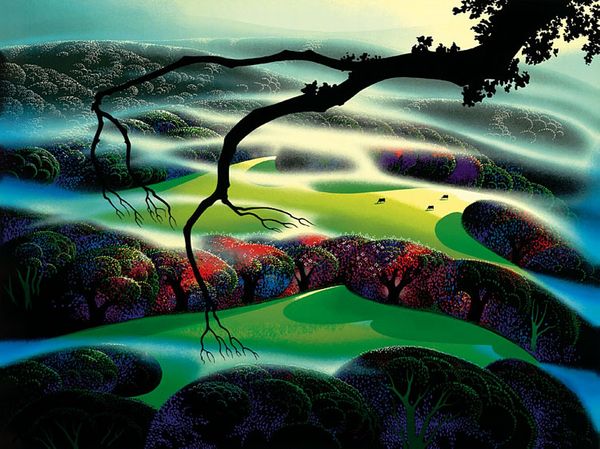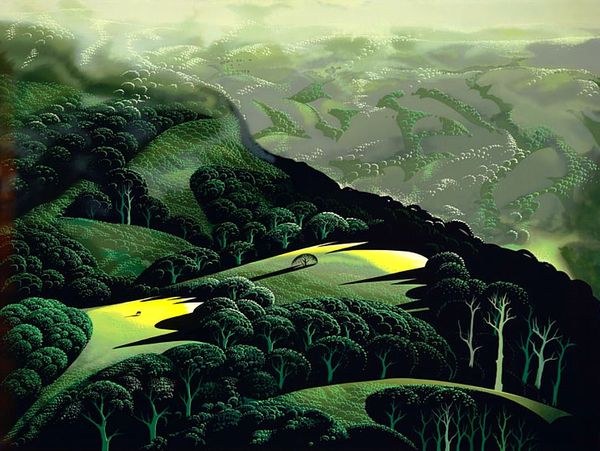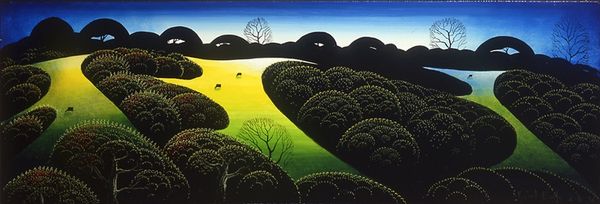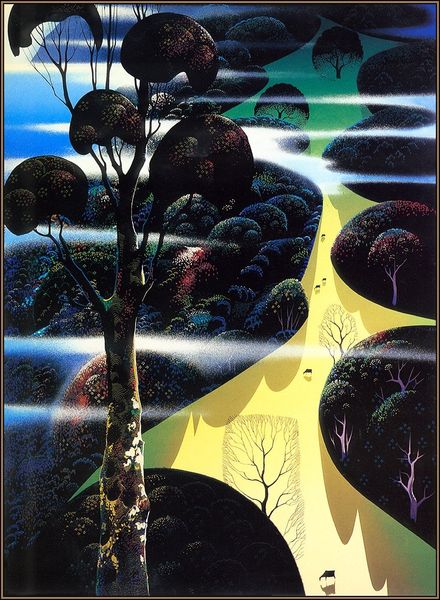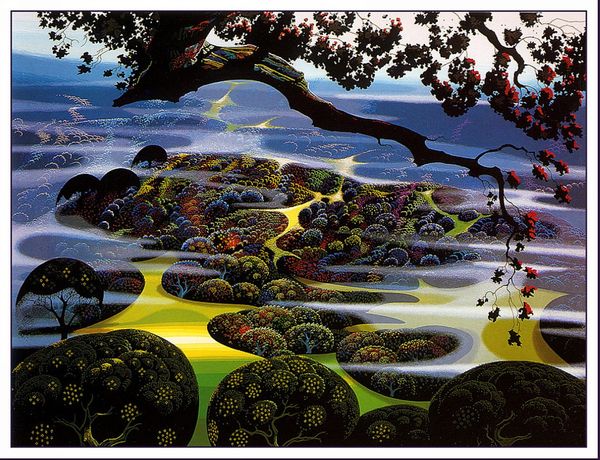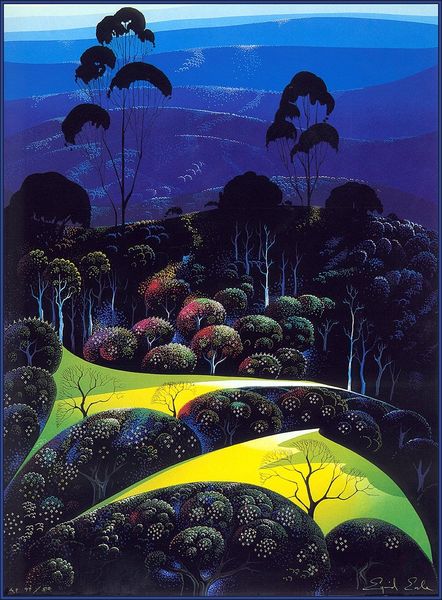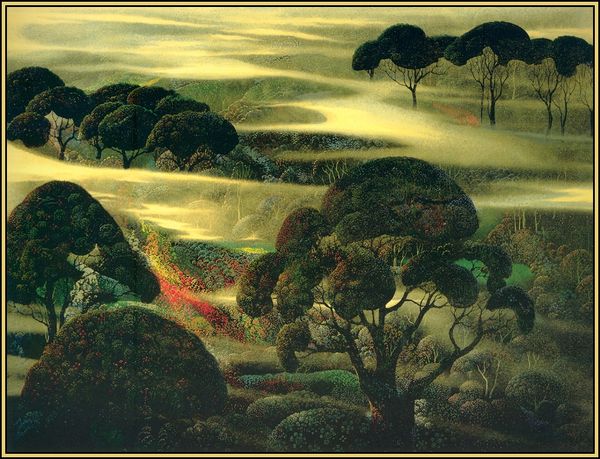
painting, acrylic-paint, impasto
#
fantasy art
#
painting
#
landscape
#
fantasy-art
#
acrylic-paint
#
impasto
#
naive art
#
surrealism
#
biomorphic
#
post-impressionism
#
surrealism
Copyright: Eyvind Earle,Fair Use
Curator: What strikes you first about Eyvind Earle’s “High Country Meadow?" It's an undated painting of rolling green landscapes under a surreal, almost liquid sky. Editor: The sheer artificiality, that verdant, almost radioactive green juxtaposed with those impossibly dark landmasses. It feels staged, like a backdrop for a play rather than a representation of a natural vista. I want to examine the type of acrylic and application, to discover the layering that makes those shades so powerful! Curator: Earle's landscapes, though seemingly idealized, have a unique relationship with the history of landscape painting. They challenge our perception by bending reality just enough to make us question what we're seeing. Did the elite collectors want this escape during a certain time? It reminds me a bit of how travel posters sell an impossibly perfect place. Editor: That tension between idyllic scenery and unsettling artifice interests me materially. The production of these landscapes, these escapes as you say, hinges on a kind of industrialized craft. Mass-produced paints meticulously applied create this individualized "fantasy art". The layering is what creates a very specific depth that shifts in different light, allowing the audience to continually interact with the piece over time. Curator: True, Earle wasn’t just depicting a place, he was also selling a concept of idyllic California, or, perhaps more broadly, an American Eden, right when suburban growth and environmental consciousness were emerging in postwar USA. He was even hired to paint backgrounds for Disney films. Editor: Speaking of "American Eden," look at those improbable colors and repetitive forms – are these really meant to celebrate nature, or tame it, box it up into easily consumable segments? Those dark hues create this very dramatic division that makes one reconsider our perspective of "idyllic". Curator: Perhaps both? His style clearly evolved over his lifetime. This work really makes one think about how an artist’s style interacts with the larger cultural narrative of nature, progress, and, dare I say, the California Dream. Editor: Precisely. Thinking about his choices, from canvas to acrylic, each contributing to this very distinct dream-like product really broadens the experience. I can almost feel the paint texture! Curator: Well, that's certainly given me a new perspective to consider, particularly concerning the socio-political message in what I originally considered "naive art." Editor: Exactly. Examining Earle’s craftsmanship helps unpack the cultural baggage we often overlook, turning a pretty picture into something much more compelling.
Comments
No comments
Be the first to comment and join the conversation on the ultimate creative platform.
